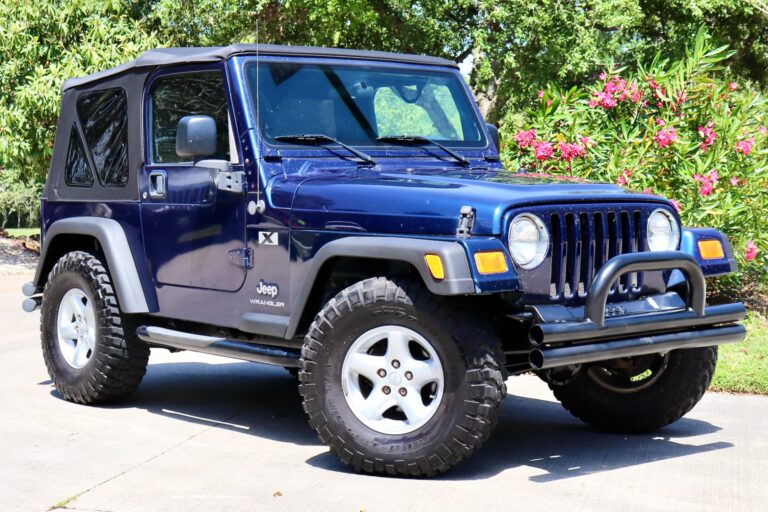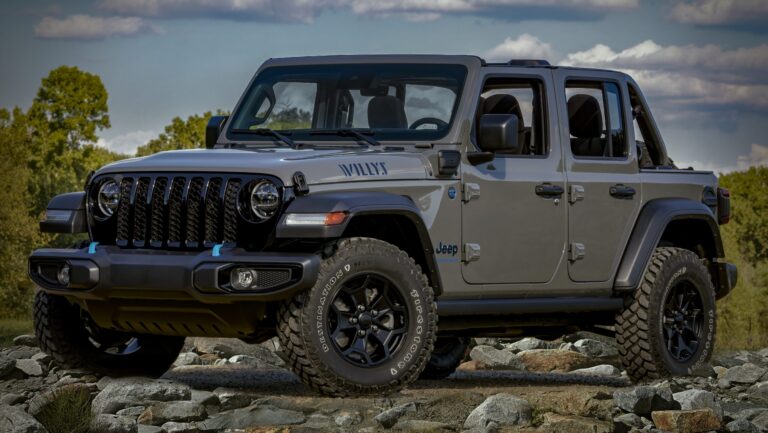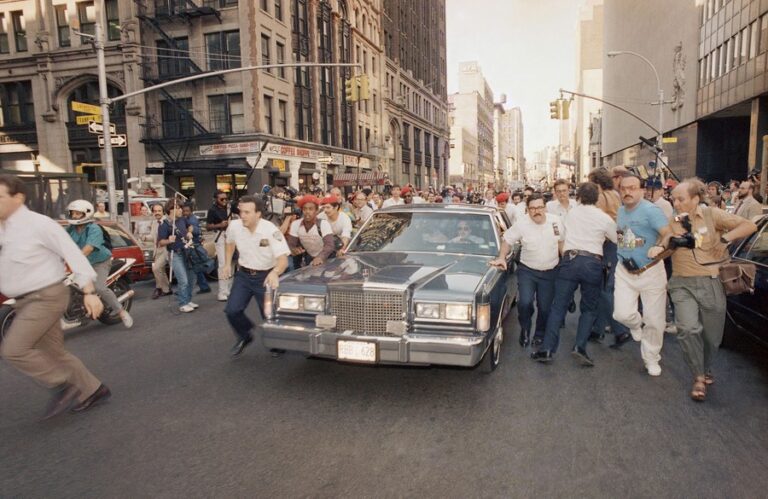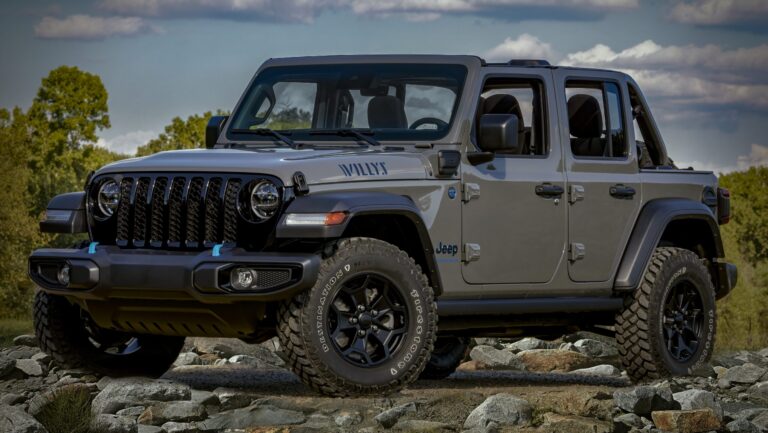1982 Jeep Scrambler For Sale: Your Comprehensive Guide to Acquiring an American Icon
1982 Jeep Scrambler For Sale: Your Comprehensive Guide to Acquiring an American Icon jeeps.truckstrend.com
The year 1982 holds a special place in the hearts of Jeep enthusiasts, primarily due to the continued production of one of the most distinctive and highly sought-after models ever to roll off the assembly line: the Jeep CJ-8 Scrambler. More than just a utility vehicle, the 1982 Jeep Scrambler represents a unique blend of rugged off-road capability, classic Jeep styling, and practical pick-up truck functionality. For those in search of a vintage 4×4 that stands out from the crowd, offers immense versatility, and carries a strong sense of nostalgia, a 1982 Jeep Scrambler for sale is often at the top of their wish list.
This comprehensive guide is designed to equip you with all the essential knowledge needed to navigate the exciting, yet sometimes challenging, journey of finding and purchasing your ideal 1982 Jeep Scrambler. From understanding its historical significance to performing critical inspections and grasping market values, we’ll delve into every aspect to ensure your acquisition is as informed and satisfying as possible.
1982 Jeep Scrambler For Sale: Your Comprehensive Guide to Acquiring an American Icon
The Allure of the 1982 Jeep Scrambler (CJ-8): A Brief History and Unique Appeal
Introduced in 1981, the Jeep CJ-8 Scrambler was AMC’s innovative response to a demand for a light utility vehicle that combined the off-road prowess of the iconic CJ series with the added practicality of a small truck bed. Essentially a stretched version of the popular CJ-7, the Scrambler boasted a 103.5-inch wheelbase – an impressive 10 inches longer than its sibling. This extended chassis allowed for a small cargo bed behind the front seats, making it incredibly versatile for both work and play.
What truly sets the 1982 Scrambler apart is its rarity. Produced for only six model years (1981-1986), and with relatively low production numbers compared to other CJ models, the Scrambler quickly became a collector’s item. Its unique profile, offering either a soft top, hardtop, or half-cab configuration, made it instantly recognizable. Owners appreciated its ability to haul gear, serve as a dependable off-roader, or simply cruise as a fun, open-air vehicle. Today, its distinct charm, coupled with its robust build and the enduring legacy of the Jeep brand, ensures that a well-maintained 1982 Scrambler commands significant attention and value in the classic car market. It’s not just a vehicle; it’s a piece of American automotive history, a symbol of adventure, and a canvas for customization.
What to Look For: Essential Inspection Points When Buying a 1982 Jeep Scrambler
Purchasing a vintage vehicle, especially one designed for rugged use, requires a meticulous inspection process. The 1982 Jeep Scrambler is no exception. Here are the critical areas to scrutinize:
-
Body and Frame Integrity (The Rust Battleground): Rust is the arch-nemesis of any classic Jeep. Pay extremely close attention to:

- Frame: Check the entire frame for cracks, bends, and especially severe rust, particularly around body mounts, spring hangers, and the rear section. A compromised frame is a deal-breaker.
- Body Tubs: Examine floor pans, rocker panels, cowl, and the rear bed for perforations or extensive bondo work. The area where the bed meets the cab is a common rust trap.
- Fenders and Doors: Look for bubbling paint or rust on the lower edges.
- Originality: Note if the body tub is original or a replacement. Aftermarket tubs are available but can impact originality value.

-
Powertrain Condition (Engine, Transmission, Transfer Case):
- Engine: In 1982, the most common engine was the reliable 4.2L (258 cubic inch) inline-six, though some may have had the 2.5L (151 cubic inch) Iron Duke I4. Listen for unusual noises (knocks, ticks, excessive smoke). Check for oil leaks around the valve cover, oil pan, and rear main seal. A compression test is highly recommended. Many Scramblers have received V8 swaps; evaluate the quality of such conversions.
- Transmission: The 1982 Scrambler would typically have a T-4 or T-5 (5-speed manual) or a TF-904/TF-999 (3-speed automatic). Test all gears for smooth engagement and listen for grinding or clunking. Check fluid levels and color.
- Transfer Case: The Dana 300 transfer case is robust. Engage 4WD high and low. Listen for grinding or binding. Check for leaks around seals.

-
Suspension and Steering:
- Lift Kits: Many Scramblers have aftermarket lift kits. Inspect the quality of the installation, U-bolts, leaf springs, shackles, and shocks.
- Bushings: Worn bushings in leaf springs, control arms (if modified), and sway bars can lead to poor handling.
- Steering: Check for excessive play in the steering wheel. Inspect the steering box, tie rods, drag link, and ball joints for wear.
-
Brakes:
- Check for firm pedal feel. Test for pulling to one side. Inspect brake lines for corrosion, calipers/wheel cylinders for leaks, and pad/shoe thickness.
-
Electrical System:
- Test all lights (headlights, taillights, turn signals, brake lights), gauges, heater/blower, and wipers. Aftermarket wiring can be a nightmare if not done correctly. Look for frayed wires or amateur splices.
-
Interior and Top:
- Evaluate seat condition, dashboard integrity (cracks are common), and gauge functionality.
- If it has a soft top, check for tears, faded fabric, and clear window visibility. Hardtops should be inspected for cracks and proper sealing.
-
Documentation:
- A clean title is paramount. Verify VIN numbers match. Service records, if available, provide valuable insight into the vehicle’s history and maintenance.
Understanding Variants and Options: Customization and Originality
The 1982 Jeep Scrambler offered a degree of factory versatility, but its true spirit often lies in its potential for customization.
- Factory Options: Original Scramblers could be equipped with different tops (full hardtop, half-cab hardtop, soft top), various seat configurations, roll bars, and tire carriers. Knowing the original specifications can help assess originality.
- Common Modifications: Due to their off-road nature, many Scramblers have undergone significant modifications. These can include:
- Lift Kits and Larger Tires: Very common for improved ground clearance and aesthetics.
- Engine Swaps: V8 conversions (Chevy 350, Ford 302) are popular for more power.
- Axle Upgrades: Stronger Dana 44 or Ford 9-inch axles for heavy off-roading.
- Aftermarket Bumpers and Winches: For protection and utility.
- Body Armor and Rock Sliders: For serious trail use.
- Originality vs. Modified: A highly original, unmolested 1982 Scrambler will generally command a higher price among collectors. However, a well-executed, tasteful modification can also add value, especially if it enhances usability without detracting from the classic look. Be wary of poorly done modifications that could lead to future headaches.
The Buying Process: Tips for a Successful Acquisition
Acquiring a 1982 Jeep Scrambler is a significant investment. Approach it with a clear strategy.
- Research and Budgeting: Understand the market value for different conditions (see price table below). Set a realistic budget that includes not just the purchase price, but also potential costs for immediate repairs, registration, insurance, and future maintenance.
- Finding a Scrambler:
- Online Marketplaces: Bring-A-Trailer, eBay Motors, Hemmings, Facebook Marketplace, Craigslist (use caution).
- Specialty Dealers: Classic car dealerships often have higher-quality, albeit higher-priced, examples.
- Forums and Clubs: Jeep forums (e.g., JeepForum, CJ-8.com) are excellent places to find Scramblers for sale by enthusiasts.
- Word-of-Mouth: Let friends and family know you’re looking.
- Pre-Purchase Inspection (PPI): This is non-negotiable. If you’re not an expert mechanic, hire one specializing in vintage 4x4s to conduct a thorough inspection. This can save you thousands in unexpected repairs.
- Negotiation: Be informed about the vehicle’s condition and market value. Don’t be afraid to walk away if the price doesn’t align with the value or if the seller isn’t transparent.
- Paperwork: Ensure the seller has a clear title in their name. Get a bill of sale outlining the vehicle details, price, and "as-is" condition. Verify VINs on the title, dash, and frame match.
Living with a Classic: Ownership Considerations
Owning a 1982 Jeep Scrambler is a unique experience.
- Maintenance: While parts for CJ-series Jeeps are generally available (many components are shared across different years and models), finding a mechanic familiar with vintage vehicles can be beneficial. Regular maintenance is key to reliability.
- Driving Experience: Don’t expect modern SUV comforts. The Scrambler is a rugged, relatively unrefined machine with manual steering (unless converted), a bouncy ride, and less insulation. However, this is part of its charm and connects you directly to the road (or trail).
- Insurance: Consider classic car insurance, which often offers better rates and agreed-upon value coverage.
- Community: The Jeep community, especially for vintage CJs, is vibrant and helpful. Joining forums or local clubs can provide valuable resources and camaraderie.
- Value Appreciation: Well-maintained and original Scramblers have shown consistent appreciation in value, making them not just a hobby but potentially a sound investment.
1982 Jeep Scrambler For Sale: Estimated Price Guide
The price of a 1982 Jeep Scrambler varies significantly based on its condition, originality, modifications, and geographical location. This table provides a general range for common conditions.
| Condition Category | Description | Estimated Price Range (USD) |
|---|---|---|
| Poor / Project | Significant rust, non-running engine, major mechanical issues, incomplete. Requires extensive restoration. | $5,000 – $15,000 |
| Driver Quality | Runs and drives, but has cosmetic flaws (dents, faded paint), minor mechanical issues, or older modifications. Suitable for immediate enjoyment but needs ongoing work. | $15,000 – $30,000 |
| Good / Restored | Well-maintained, minimal rust, solid mechanicals. May have been restored years ago or received significant upkeep. Ready for regular driving and light shows. May have tasteful modifications. | $30,000 – $55,000 |
| Excellent / Show Quality | Near-perfect condition, professional restoration or exceptionally well-preserved original. No significant rust, fully functional, often highly original or with high-quality, period-correct upgrades. Ready for show circuit. | $55,000 – $90,000+ |
Note: Prices are estimates and can fluctuate based on market demand, specific options (e.g., original hardtop vs. soft top), engine type, and the quality of any modifications or restorations. Rare factory options or highly desirable engine/transmission combinations can push values higher.
Frequently Asked Questions (FAQ) about the 1982 Jeep Scrambler
-
Q: Why is the 1982 Jeep Scrambler so rare and expensive?
- A: Its rarity stems from lower production numbers compared to other CJ models during its short six-year run (1981-1986). Its unique blend of CJ-7 ruggedness with a practical truck bed makes it highly desirable among collectors and enthusiasts, driving up prices.
-
Q: Can I daily drive a 1982 Scrambler?
- A: While technically possible, it’s not ideal for modern daily driving. They lack modern safety features, comfort, and fuel efficiency. However, a well-maintained Scrambler can be a reliable weekend cruiser or second vehicle.
-
Q: Are parts hard to find for a 1982 Scrambler?
- A: Generally no. Many mechanical and body parts are shared with the more common CJ-7, making a wide range of aftermarket and reproduction parts readily available. Specialty Scrambler-specific parts (like the bed tub or hardtop sections) can be rarer but are still findable.
-
Q: What’s the main difference between a CJ-7 and a CJ-8 Scrambler?
- A: The primary difference is the wheelbase. The CJ-8 Scrambler has a 103.5-inch wheelbase, 10 inches longer than the CJ-7’s 93.5 inches. This extended length allows for the small pick-up truck bed behind the front seats.
-
Q: What engine should I look for in a 1982 Scrambler?
- A: The 4.2L (258ci) inline-six is the most common and highly regarded for its reliability, torque, and ease of maintenance. While V8 swaps offer more power, the original 258 is often preferred for authenticity and classic charm.
-
Q: Is a 1982 Jeep Scrambler a good investment?
- A: For well-maintained, original, or professionally restored examples, the 1982 Jeep Scrambler has shown consistent appreciation in value over the years. Like any classic vehicle, its investment potential depends on condition, market demand, and proper storage/maintenance.
Conclusion: The Enduring Legacy of the 1982 Jeep Scrambler
The 1982 Jeep Scrambler is more than just a classic 4×4; it’s a testament to Jeep’s enduring legacy of versatility, ruggedness, and unique design. Its distinctive profile, coupled with its undeniable capability, has cemented its status as a highly sought-after vehicle for collectors, off-road enthusiasts, and anyone who appreciates a piece of American automotive history.
Embarking on the journey to find a 1982 Jeep Scrambler for sale is an exciting endeavor. By thoroughly understanding its history, knowing what to inspect, being aware of market values, and approaching the buying process with diligence, you can confidently acquire an iconic vehicle that promises not just transportation, but a unique lifestyle, countless adventures, and a deep connection to the spirit of open-air freedom. The right Scrambler isn’t just a purchase; it’s an investment in a legend.





